This post was most recently updated on November 13th, 2023
The following was, more or less, a speech I gave at the 2014 Doula UK conference.
I am passionate about breastfeeding and the ways in which doulas fit into the breastfeeding support landscape. I’d like to take you on a little tour of some of the social attitudes to breastfeeding that interest me the most, explore our boundaries as doulas and breastfeeding advocates and share some of my hopes and fears for the future.
If you Google …Is Breastfeeding… the top results are:
…best?
…hard?
…in public legal?
And turning the words around to make …Breastfeeding is… gives us:
…painful
…hard
…so hard….best
…gross
…disgusting
If Google is an adequate litmus test of Western social attitudes, then what is this telling us about how we feel, as a culture, about infant feeding?
Most of you will be aware that ours is one of very few societies in the world that see boobs as erogenous.
We use breasts to sell cars and newspapers, we enlarge them, lift them, encase them in lace, show them off (as long as no areola or nipple peeps out of course!). They are simultaneously our badge of womanhood and our cross to bear. We are judged and judge ourselves on the state of our jugs and simultaneously worry that they may let us down, sag, lose their allure or even kill us.
Somewhere, along the way, we’ve forgotten what these mammary glands are FOR.
Take our tabloid newspapers for example – here’s what most people think of when they think of breasts. They are tits. Good, old-fashioned, homely, titillating tits. Part of our culture since the 70s.
Despite dividing the nation, these images have become an accepted part of our culture, giggled over by generations of adolescent boys, wanked over and taken for granted.
It’s not until recently, with the rise of Lucy-Anne Holmes’ NO More Page 3 campaign have people come together to call for an end to Page 3.
It’s not the nipples that get campaigners all riled up – after all, we all have them – but the effect images like these have on young women’s body image and self-esteem. They perpetuate the objectification of women which we know has a direct link to sexual violence. For me, the sadness is a seeming loss of understanding of who our breasts actually BELONG to.
Despite Page 3 clearly being a hangover from a more sexist age, Holmes’ campaign has been called ‘sinister’ and men as prominent as Nick Clegg have branded anti Page 3 campaigning as censorious. Despite the Leveson enquiry finding that this issue merited further investigation, Dominic Mohan, then editor of The Sun, called Page 3 an “innocuous British institution”
What about outside traditional media? I’m sure you’ve heard of facebook bans connected with nipples and breastfeeding. Many of the breastfeeding related bans have not contravened facebook’s own terms of service. There is no more flesh on show than a Hollywood A-lister on the red carpet.
But, Facebook recently banned me from placing an ad with this image:
Those of us who work in this world of breasts and bodies have to inhabit a shadowy world of taboo, hang ups, revulsion and longing. People have complicated relationships with their bodies and the way they make them feel. We have to explore the hinterlands of our own attitudes – how far can you be pushed before reaching your limits of judgement? What does it take to shock YOU?
Mothers are expected to breastfeed. They are encouraged to at least give it a go by their midwives, antenatal teachers and doulas.
But we don’t talk about the dark side of breastfeeding in case we put them off!
The result? Mothers who are not adequately prepared for breastfeeding, without good support.
It’s like trying to learn survival skills, in the jungle, alone, armed only with a tea strainer.
What happens? Mothers feel betrayed, let down and pressurised…or maybe even more sadly, think they have failed.
The reality is – they have been failed by the very system that was meant to support them.
The intense and often toxic feelings this state of affairs engenders is a fire that threatens to engulf us.
The flames are fanned by the formula companies, journalists and academics interested only in profit and career progression.
There are lots of theories about how we’ve got to this place; not least the powerful multinationals that have a vested interest in babies not breastfeeding. But it is more than that: Along the way, somehow we have learnt not to trust our bodies.
From conception to birth to feeding our babies, technology and capitalism pave our way and cushion us from the visceral experience of our mammal nature.
It appears that the more disconnected we get from our bodies, the more we rely on science, money and technology; even believing it to be superior to the model that nearly 2 million years of evolution has perfected. Our bodies become a necessary evil – we leak unsavoury fluids and are inconvenienced by pain and dysfunction.
And from unsavoury and inconvenient, it’s only one small step to distasteful, abhorrent and eventually, taboo.
However, the last couple of generations has seen a resurgence in interest in breastfeeding. But women are growing up disconnected from nursing, without the faintest clue how a baby latches or the natural rhythms of a nursing newborn .
The bottle is the symbol of motherhood – the iconography is everywhere; on baby changing rooms, congratulations cards and in the media.
It’s hardly surprising so many women struggle…or that those who support them are ignorant too. And it’s hardly surprising, in this cultural context, that an increasing number of women feel compelled to breastfeed in a tent:
It is only in recent years that we have begun to gain a deeper understanding of the way that breastfeeding works.
We have been sold an idea of breastfeeding as a series of ritualised movements or steps that are the same for everyone. A very ‘mother-led’ activity, measured out by the clock into arbitrary slices of time. But nursing is actually baby-led – the mother merely providing the habitat, or appropriate environment of her body, her attention and her desire to nurse.
Provided the mother and newborn are allowed to bathe in an oxytocin-rich environment, the chances are that the baby will latch, and keep latching.
When the mother looks up from her bubble to ask if things are ‘right’ or ‘normal’ I believe she needs the same kind of support that we would provide in labour – reassurance, quiet faith in her ability to know her body and her baby. ‘How does it feel?’ we should whisper. ‘Is your baby enjoying it?’ ‘You know how to do this – the knowing is deep inside both of you’.
Sadly, much of what we do during birth and immediately after serves to impede this oxytocin-rich environment post-birth.
So much seems to result in their oxytocin-bubble being burst.
Drugs and instruments and surgical procedures put a brake on the baby’s natural reflexes to find the breast.
Not as much is said about all the little things that can happen, even after a normal birth, that can burst the dyad’s oxytocin bubble.
- The baby having a very ‘hands on delivery’
- Early cord clamping
- Separation immediately after birth
- Baby cleaned and wrapped before being presented to the mother
- The baby being presented to the mother; laid in her arms rather than chest-to-chest contact
- All the other fuss of a standard delivery unit – hats, weighing, vitamin K injections, the hurrying of the 3rd stage, bright lights, staff coming and going, phone calls made, photos taken
- The mother or baby being washed too soon. The smell imprinting necessary for safe attachment is well understood in animals, but rarely discussed in humans.
- The mother not kept totally warm
- The mother not feeling safe, private and unobserved
- The ‘BABY-TO-BOOB HEAD SHOVE’
The ‘Golden Hour’ is ignored or whittled down to a bare 45 minutes. Then baby is dressed, swaddled and put in the cot.
Why? When the mother’s body is the baby’s natural habitat?
I sometimes wonder whether seeing newborns self-attach like lambs or piglets is an unsettling reminder of our mammal nature?
The desire to have a baby is imprinted deep in our genetic coding. It is not a rational, neo-cortical decision. Likewise, the inclination to the put the baby to the breast is also a biological urge. It is a feeling, deep in our wombs and hearts and guts. When our babies flail around and don’t latch, when they push against us and arch away, when they spit out the nipple, when this thing we yearn to do hurts, when our nipples bleed or when our beloved babies don’t gain weight; when all around us talk about the ease and advantages of formula; when lactation seems just too hard to master, the grief can be deep and damaging. The sense of rejection and failure can be all-consuming and the anger can be debilitating.
Who needs massive marketing budgets when the deep hurt of some mothers collides with the understandable pride and joyful flush of oxytocin that bathes breastfeeding mothers?
And what about the peccadillos – those shady places where boundaries blur. Are lactating breasts off the sexual menu? Or can they add a new layer of excitement to her or him? What if he tastes some? What if you both like that?
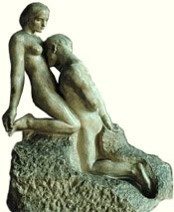 What about nursing our children til they decide to stop?
What about nursing our children til they decide to stop?
 What about feeding other people’s babies? Wetnursing or cross-nursing – is that distasteful somehow? Or dangerous?
What about feeding other people’s babies? Wetnursing or cross-nursing – is that distasteful somehow? Or dangerous?
Perhaps because breastfeeding has sexual undertones in our culture, we wonder if nursing another child would be somehow disloyal – like being unfaithful? Exchanging bodily fluids with anyone other than your significant other is, after all, a big deal!
And milk sharing? Can we get our heads round it if milk banks take it and make it a sterile, anonymous process, like giving blood?
But what about informal mother to mother milk sharing on social media? How do we feel about that?
If we are to normalise breastfeeding and breastmilk, as a culture we have to grapple with these thorny questions and work out where our judgement buttons are!
If, like me, you have worried about how your body is seen by others all your life, defining your self-worth by your size and shape, breastfeeding can seem particularly complex.
Are these second rate tits up to the job? Are they fit for public consumption?
We are taught that our bodies are fragile and liable to break down. We are constantly comparing ourselves to the most beautiful and find ourselves wanting.
So how do doulas fit into this landscape?
We work with real women, who bring the whole of themselves to their new relationship with their baby. People are wonderfully complex and beautifully complicated and the time around having a baby, as we know, can mean these complexities can come to the fore.
A doula’s prime role is to be her still centre. A maelstrom of emotions whirl around in the early days – and we are alongside her listening.
We suck up some of that emotion and shoulder some of the burden.
Sadly, these days mothers may have no-one, other than her doula, sitting by her with unconditional positive regard for her.
In other words, we approve of her, completely, whatever and whoever she is and does. And we tell her that!
In the midst of conflicting advice, of well-meaning help that is sometimes more of a hindrance and undermining comments and judgements from those around her, the doula may well be the one person who says things like:
‘
You’re doing so well’
‘How do you feel your baby is doing?’
‘What would you like to do?’
‘What do you think you need?’
Like other mammals, we learn by example. We are a circle of mothers, evolved as a tribal species.
Doulas are part of a resurgence of understanding that social support is crucial to safe and fulfilling parenting.
These circles are orbits, moving closer and further away at the appropriate moments. We orbit closer as she needs us in the intensity of those early days and our orbit takes us further away, and often back again, as the need arises.
By signposting & facilitating the mother’s relationships of trust with those around her, we empower her and build her self-esteem and sense of ‘ownership’ of her mothering journey. The great strength of doula support is in our relationship building. We find the overlap; the place where we meet on a human heart level, with all kinds of people. It’s in our doula DNA.
We build Venn diagrams of love, with the motherbaby at the centre.
This place of overlap, where I can see something in that person that I can admire, helps the whole team feel calm and keeps the mother at the centre of the story.
I think doulas have a unique opportunity to create joined up thinking and joint working practices within the birthing and breastfeeding communities – because we have a special perspective. We see the whole journey – we may have known the mother for months, from early on in her pregnancy. We have an intimate understanding of the challenges, hopes and fears she is bringing to her breastfeeding relationship and where they come from. Doulas are A1 communicators. Building bridges, seeing connections and touching the human within with empathy and sensitivity.
I see this happening all around me. Examples include Birth Companions, which support women in prison, the Doula UK partnership with Hestia, supporting women living in refuges, and our partnership with ABM providing breastfeeding training to doulas.
By bringing the worlds of birth and breastfeeding closer together, doulas are creating a new era, where all birth and breastfeeding support workers can cooperate to create a super-team around the mother.
Breastfeeding support in this country has been built on a solid philosophy of it being free at the point of contact. Mothers should never have to pay for breastfeeding support unless they want to. I applaud that philosophy but, over the last decade, I have come to see things as a little more complex….Doulas, IBCLCs and perhaps independent midwives may have a different perspective:
An exchange of some kind, be it money or vegetables from their allotment, changes the dynamic of the relationship in a subtle but meaningful way. Clients engage with the process more deeply and feel less beholden to the doula after the relationship comes to an end. It allows most of us, who didn’t inherit millions, to continue doing what we love.
We lose too many good people to the financial necessities of family life. Despite a never-ending stream of volunteers, talented, loving and skillful doulas and breastfeeding supporters are falling by the wayside and it breaks my heart. And this means that we have an army of newly qualified peer supporters and counsellors but only a very small group of us who can dedicate whole working lives to the cause.
They give up their passion and soul food because society does not value the work we do.
How do we ensure that lay breastfeeding support is woven into the very fabric of society? How do we make sure that the powers-that-be value the service we provide?
We need to make sure that the service is reliable and consistent.
We need to put a VALUE on what we do!
Building large, complex support systems purely on voluntary support seems to me to be an unsustainable model, especially in a time of tough economic realities.
Those of you who work with breastfeeding mothers will probably agree that we are seeing babies younger and younger and mothers with more complex problems. Traditionally these mothers would have been supported by their midwives. These days, they are discharged back into communities which may have little skilled breastfeeding support other than groups run by the charitable organisations. Where do we stand as Breastfeeding Counsellors when our boundaries are continually being challenged in this way? Is it the role of an unpaid volunteer to provide the ONLY breastfeeding support in a community?
I see Breastfeeding Counsellors and doulas having very similar roles: we are complementary to the health care system, not instead of.
Of course, there is no doubt that the exchange of money can create the possibility of ethical conundrums.
Are there people or organisations that we shouldn’t be accepting payment from?
We need to make sure that we don’t accept money, sponsorship or other incentives from formula companies or retailers who sell formula, bottles or teats. Those who benefit from mothers NOT reaching their breastfeeding goals must not profit from the ‘halo effect’ of association with organisations such as ours.
And then there is the issue of giving something completely for free.
Many of us feel a need to give free support. For some of us, it is about giving something back.
Do you remember how it feels, in the midst of babyshock and bleeding nipples to be tended to by a woman who is taking time away from her own family to help and support us; expecting nothing in return?
There is a purity to this kind of exchange and there is good evidence that giving increases the sum of human happiness. One study showed that it was not what, or how much we give, but the very act of giving without thought for what we may get in return that makes us happier. However, that finding came with 3 important caveats:
Make a CHOICE
People need to feel under no obligation to give
Make a CONNECTION
Giving brings us closer to those around us, enhances relationships and giving to those we feel close to makes us happy
Make an IMPACT
Feeling that our giving makes a real world difference makes giving feel even better
http://greatergood.berkeley.edu/article/item/how_to_make_giving_feel_good
I would add that when I choose to give freely and for free I do ask for something – I ask that the recipient pays it forward. In this way I hope to remind mothers that there will come a time when they are able to give in their turn. In this way I hope we can begin to rebuild a culture of mother to mother support.
So what are my hopes for the future?
Well, we’re up against some powerful forces!
The cultural, social, political and economic pressures that make breastfeeding so incredibly difficult for so many women are going to take a mighty effort to overcome. We don’t have time for petty squabbles, internal politics, or to be held back by old scores and ideas that may now have had their time.
I have great hopes for the possibilities that the doula community offers – within our ranks we have NHS and ex-NHS employees, members of all the breastfeeding charities and IBCLCs. Maybe we can provide neutral territory – bridging the understanding gap, forging friendships and working relationships that may perhaps help us think creatively and work together.
There is no doubt that wearing both breastfeeding support and doula hats can present challenges. It makes us reflect on our boundaries and the possible conflicts of interest that can threaten both our personal integrity and the reputations of the organisations we represent.
But I refuse to accept that juggling more than one role is necessarily a weakness. Actually I see it as a strength. Dual roles will be right for some doulas and not for others.
I am convinced that we have a unique opportunity, in a new era of social media and in a world where women can actually get paid to do what they love, to reach more women and families and build enduring support systems.
After all, doulas understand oxytocin; we have a deep knowledge of that love hormone that makes miracles happen. We see for ourselves how that love blossoms through pregnancy and finds fruition so often in the nursing relationship. By nursing, we not only nurture our baby but our own body and soul.
And along the way, if we can bust some myths and turn over some taboos, we are adding to the sum of human happiness!
“Whenever a taboo is broken, something good happens, something vitalizing.”
~ Henry Miller

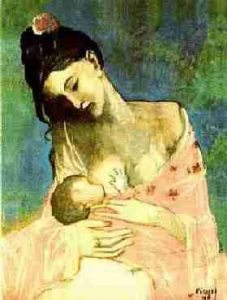
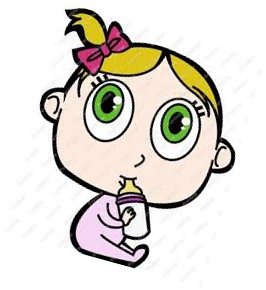
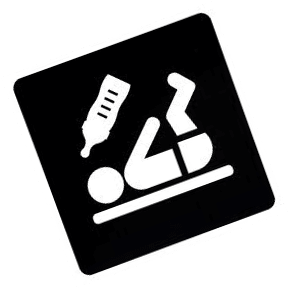


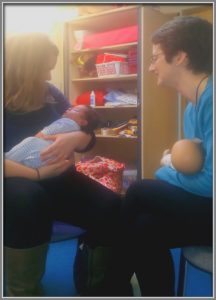
Thank you Maddie – excellent piece, informing the debate on the politics of breastfeeding, and inspiring doulas to commit to working in partnership with those who seek to support the new mother and her baby – thebirthhub.co.uk is part of how we build these networks.